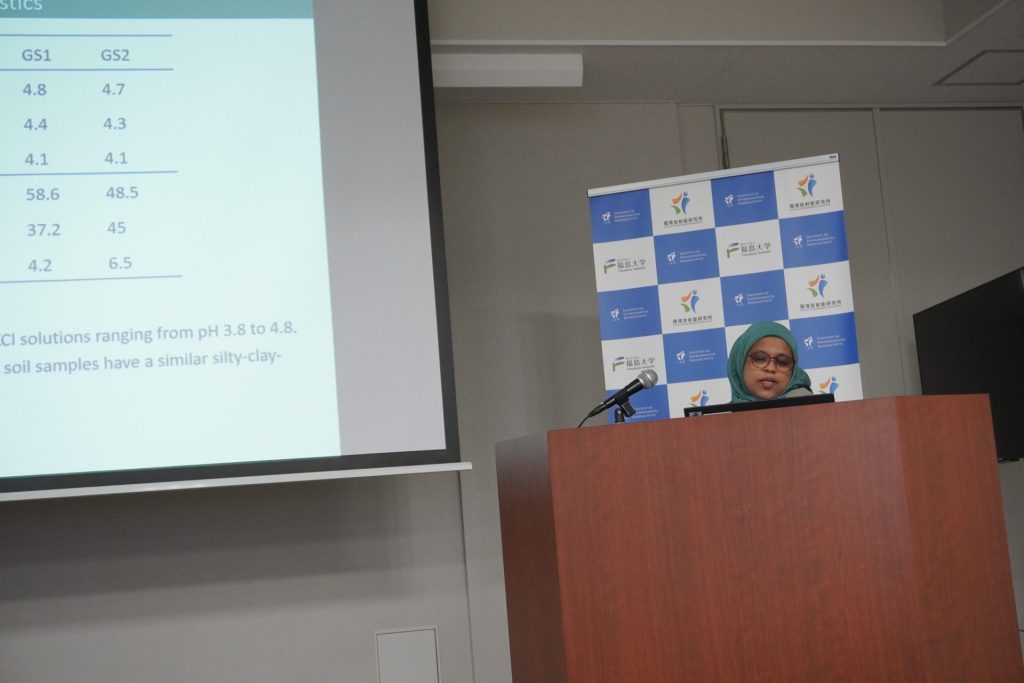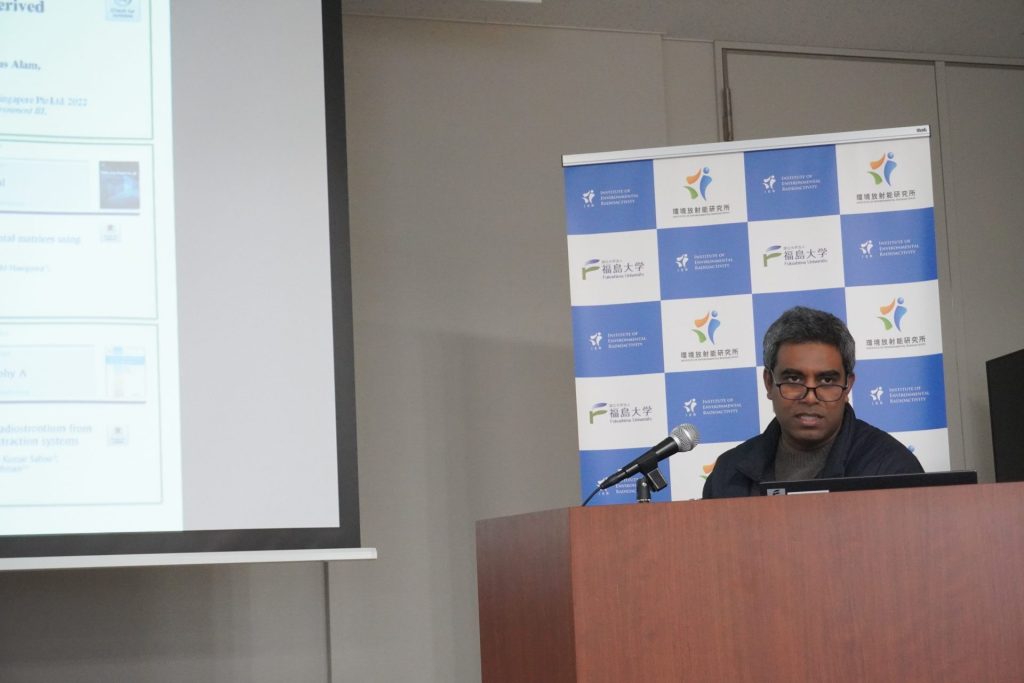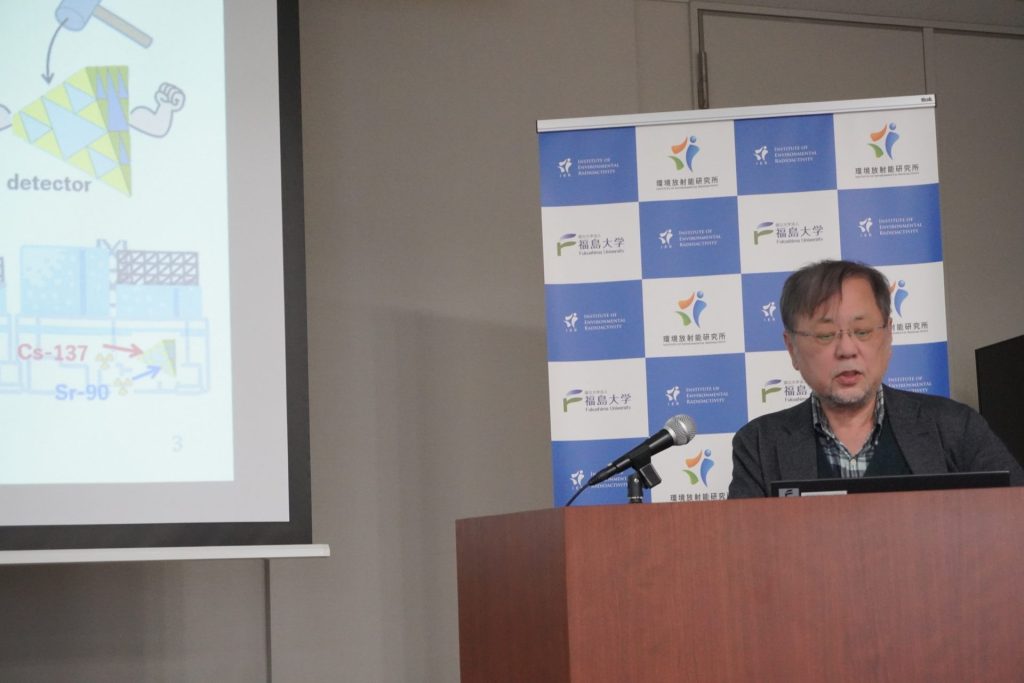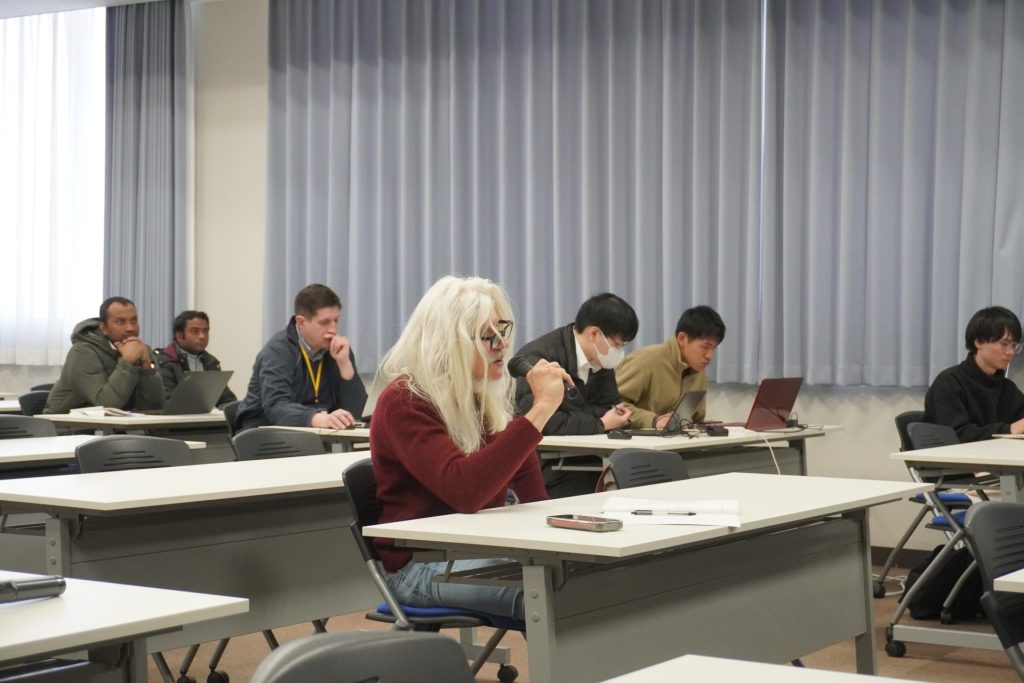February 26, 2024 11th IER seminar of FY2023 was held.
<International Visiting Scholar Begum, Associate Professor Rahman (Title at the time), Project Professor Torii>
| Date & Time | Mon. February 26, 2024, 13:30-15:00 JST | |||||
| Venue | 6F Conference room, Main Bldg. IER/Online (Zoom) | |||||
| Speakers | International Visiting Scholar Zinnat Ara BEGUM Associate Professor Ismail M.M. RAHMAN Project Professor TORII Tatsuo (Presentation order) | |||||
| Lecture Titles | ・Application of chemical dispersant for volume reduction of radiocesium-contaminated soil. (BEGUM) ・Synthesis of a supramolecule-based conjugate material and its application in separating radiostrontium from aqueous solutions. (RAHMAN) ・Development of a visualization device of radiation distribution based on a new concept (TORII) | |||||
Institute of Environmental Radioactivity (IER) regularly holds the IER seminar in which the faculty members report on their research results, with the aim of facilitating their research activities and promoting communication.
In the 11th IER seminar of this fiscal year that was held on February 26, 2024, three presentations were given by International Visiting Scholar Zinnat Ara BEGUM, Associate Professor Ismail M.M. RAHMAN, and Project Professor TORII Tatsuo to 24 participating researchers and students as follows.
Dr. BEGUM, presented “Application of chemical dispersant for volume reduction of radiocesium-contaminated soil.” Following the Fukushima Daiichi Nuclear Power Plant accident, a significant decontamination effort was launched to facilitate the return of evacuees. As a result, there is a growing need for innovative methods to effectively reduce the volume of waste generated by decontamination activities. Dr. BEGUM explained the ability of a chemical dispersant (sodium hexametaphosphate) to separate fine soil particles with a high degree of radioactive cesium contamination from the contaminated soils in Fukushima. Additionally, factors such as the concentration of organic carbon, monovalent cations, polyvalent cations, soil functional groups, and their impact on the adsorption of radioactive cesium onto fine soil particles were discussed in relation to the “volume reduction of radiocesium-contaminated Soil.”
Associate Professor Rahman (Title at the time) presented “Synthesis of a supramolecule-based conjugate material and its application in separating radiostrontium from aqueous solutions.” Associate Professor Rahman developed a novel sorbent composition incorporating crown ether. Specifically, a new solid-phase sorbent was synthesized by combining 4,4-diformyl dibenzo-18-crown-6-ether (DFDB18C6) and mesoporous silica SBA-15 grafted with aminopropyl (SBA-NH2). Assessment of the sorbent was conducted using stable strontium as a radiostrontium analog, considering factors such as pH, reaction time, concentration ratio of strontium to competing ions in the aqueous solution, and solution temperature, explaining their influence on sorption properties of strontium.
Project Professor Torii discussed the development of a new radiation measurement device with a fractal structure that can visualize the radiation distribution from various directions. The conventional instruments are capable of imaging gamma rays, but it is difficult to measure charged particles such as beta rays. The newly developed device can measure not only gamma rays but also beta rays in all directions and is expected to be used not only for measuring radiation in the environment but also in various other fields. Examples were presented, including the hot spot detection in difficult-to-return zones and radiation imaging within the Fukushima Daiichi Nuclear Power Plant (1F) site. Measurements within the 1F site allowed Professor Torii and his team to determine the distribution of radiation sources from 100m. In the latter half of the seminar, Professor Torii also introduced a new monitoring system using swarm robots, which he is currently working on.
After each presentation, various questions and comments were raised by IER faculty members.





